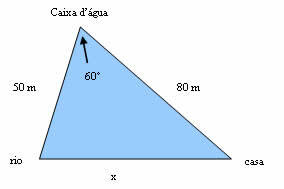Permutation is a counting technique used to determine how many ways there are to order the elements of a finite set. To make an exchange is to perform an exchange and, in combinatorics problems, it means exchanging the elements of place, considering their ordering.
These techniques are part of a field of Mathematics called Combinatorial Analysis, which aims to know and count the different ways of organizing sets and their elements. Simple permutation and a with repeated elements address this category of problems.
simple permutation
A simple permutation is the ordering of the elements of a finite set, when their elements do not repeat, are distinct. It is used to determine the quantity of these sorts.
The amount of permutations of a set of n elements is equal to n! (reads n factorial).
The formula for determining the number of simple permutations is
Consider a set with n elements. To organize them in a queue, we need to choose the first one, and for that we have n possibilities. To choose the second one, we have (n-1) possibilities, one less, because we already used an option when choosing the first one. This process continues until only one element remains.

To determine the total number of permutations, we multiply the number of possibilities that exist in choosing each element. Thus:
The expression above is called factorial of n and we use the symbol no!.
learn more about factorial on here.
Example:
The different ways of organizing the letters of a word are called anagrams. How many anagrams are there for the word DUCK?
These are the possibilities:

So, as the word PATO has 4 letters, we have to
So there are 24 simple permutations for the word DUCK.
Simple Permutation Exercises
question 1
Calculate the value of .
question 2
Consider a first-come, first-served queue of people where there are six people at any given time. How many different ways could these people be ranked from first to last?
Each ordering form is a simple permutation, since individuals are unique and do not repeat themselves. So, with six people, the answer is a permutation with 6 elements.
question 3
Consider the word FORK and answer the following questions?
a) How many are the anagrams of the word FORK?
As the letters are not repeated this is a simple 5-element permutation case.
b) How many anagrams start with the letter A?
In this case, we fix the letter A at the beginning and calculate the permutations with the letters GRFO, which are permutations of 4 elements.
1 possibility for the letter A x .
c) How many anagrams are there if the vowels are always next to each other?
One possibility would be G R F A O.
There are three ways to order the consonants. P3 = 3 x 2 x 1 = 6
There are two ways to order the vowels. P2 = 2 x 1 = 2
There are still two more ways to organize the groups (consonants and vowels) among themselves. P2 = 2 x 1 = 2
Now just multiply the results.
P3 x P2 x P2 = 6 x 2 x 2 = 24
So there are 24 anagrams where the vowels are always together.
Permutation with repetition
A permutation with repeated elements happens when in a set of n elements, some of them are equal.
In the formula for determining the number of permutations with repetition, we divide the factorial of the total number n of elements by the product of the factorials of the repeating elements.
is the number of permutations of n elements.
it is the numbers of elements of each type that are repeated.
is the factorial of the total number of elements n.
Examples
Let's determine how many permutations there are for the word EGG. To make it easier, let's color the letters. Let's look at the anagrams of the word EGG.
The number of simple permutations with 3 elements is given by
However, some permutations are repeated and we cannot count them twice. For this we must divide the value of (because the word has three letters), by
(because the letter O is repeated twice).
Thus, the number of permutations for the letters of the word OVO is equal to 3.
Let's look at this other example where we will define the number of permutations for the letters of the word BANANA.
Where:
means permutation with 6 elements where the letters A and N are repeated.
3! for the letter A repeats itself three times.
2! for the letter N is repeated twice.
A tip to make the calculation easier is to develop the 6! until you reach 3!, simplifying with the denominator. See the development.
Thus, the number of permutations for the letters in the word BANANA is equal to 60.
Perhaps you are interested in these contents on Combinatorial Analysis:
Combinatorial Analysis
Exercises on Combinatorial Analysis



